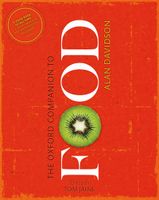Chestnut : Uses
Published 2014
Nuts of wild varieties are relatively small but of good flavour. They have been an adequate staple food for peasants in poorer regions, and remain a useful foodstuff in the countryside. Rural uses of wild chestnuts include the original Italian polenta, a porridge which was made with chestnut meal before the introduction of maize from the New World; and bread and biscuits made of chestnut meal mixed with cereal flour.
Chestnut bread is characterized by large, irregular holes. Although the European chestnut has almost the same proportions of protein, starch, and fat as wheat, it lacks gluten to bind the bread together, and can only be used in moderate amounts. A higher proportion of chestnut meal is used in Italian necci, flat cakes baked on hot stones and resembling Indian chapati. Chestnut meal, called farina dolce (sweet flour) in Italian, is often used as a thickener in Italian dishes. In Italy chestnuts which have been dried to keep through the winter are called secchielli; in Spain pilongas. They need to be soaked or steamed before they can be used.
Become a Premium Member to access this page
Unlimited, ad-free access to hundreds of the world’s best cookbooks
Over 160,000 recipes with thousands more added every month
Recommended by leading chefs and food writers
Powerful search filters to match your tastes
Create collections and add reviews or private notes to any recipe
Swipe to browse each cookbook from cover-to-cover
Manage your subscription via the My Membership page
Monthly plan
Annual plan
Part of
Advertisement
Related Recipes
-
-
-
-
Related Reference
-
-
-
-
Advertisement



